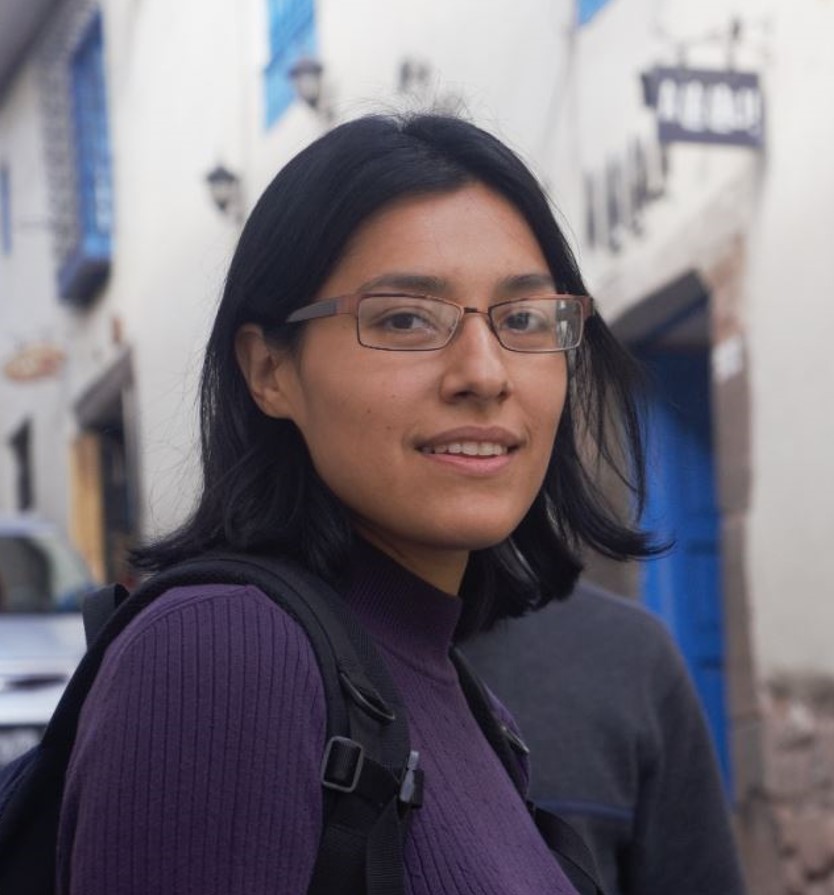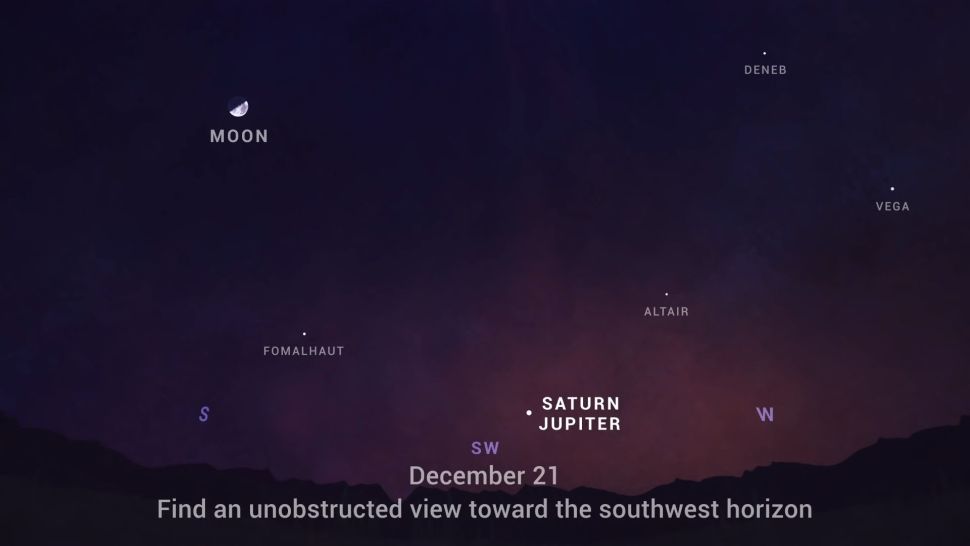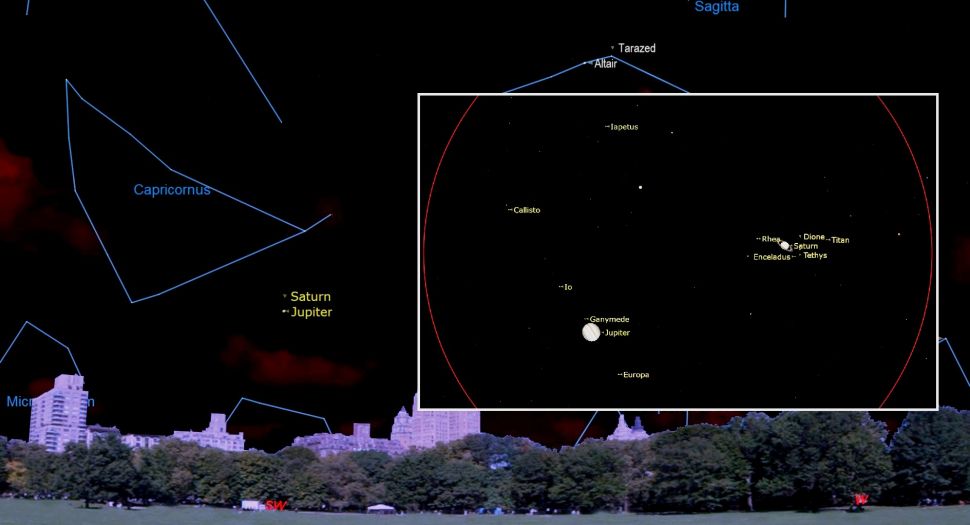Don't miss the winter solstice 'great conjunction' of Jupiter and Saturn tonight!
Jupiter and Saturn have not made this close of an approach to one another in the visible night sky in about 800 years.
Tonight (Dec. 21), find an unobstructed view of the southwest horizon to catch a bright "star" that is actually two planets appearing as one blip of light.
Saturn and Jupiter get close to one another from our perspective on Earth about once every 20 years because of their orbits. This year, however, the two planets will appear closer to each other than they have in centuries; that their duet is occurring at the end of December inspired the label "Christmas Star" for what is otherwise known as a "great conjunction."
If you prefer to stay indoors or have an obstructed view, there are also several webcasts you can watch live from the comfort of your home.
'Great conjunction' 2020: NASA tips to see Jupiter & Saturn as a 'Christmas Star'
Although Jupiter and Saturn remain hundreds of millions of miles apart in space, the two largest planets in our solar system will appear to snuggle close in tonight's sky.
Today is an important celestial day for another reason, too: it is a solstice, marking the official start of winter in the Northern Hemisphere and the beginning of summer in the Southern Hemisphere.
It's certainly a charming cosmic coincidence that the day with the least amount of daylight all year in the northern hemisphere is also the day that the two planets make a special illumination in the sky. The long night means that viewers have more opportunity to see the conjunction, according to Henry Throop, astronomer in the Planetary Science Division at NASA Headquarters in Washington, who commented on a Dec. 15 NASA statement about the event.
Breaking space news, the latest updates on rocket launches, skywatching events and more!
Today, Saturn and Jupiter will appear just one-tenth of a degree apart, or about the thickness of a dime held at arm's length, according to a Dec. 2 skywatching NASA statement. Under high magnification, however, Jupiter and Saturn may appear as separate objects. Observers with binoculars or telescopes may see the planets and some of their moons in the same field of vision.
It's been about 400 years since Jupiter and Saturn passed this close to each other in the sky, and almost 800 years since their conjunction occurred at night, according to NASA.
Editor's note: If you capture an amazing view of the great conjunction of Dec. 21 and would like to share it with Space.com for a story or gallery, send images and comments in to spacephotos@space.com.
Follow Doris Elin Urrutia on Twitter @salazar_elin. Follow us on Twitter @Spacedotcom and on Facebook.

Doris is a science journalist and Space.com contributor. She received a B.A. in Sociology and Communications at Fordham University in New York City. Her first work was published in collaboration with London Mining Network, where her love of science writing was born. Her passion for astronomy started as a kid when she helped her sister build a model solar system in the Bronx. She got her first shot at astronomy writing as a Space.com editorial intern and continues to write about all things cosmic for the website. Doris has also written about microscopic plant life for Scientific American’s website and about whale calls for their print magazine. She has also written about ancient humans for Inverse, with stories ranging from how to recreate Pompeii’s cuisine to how to map the Polynesian expansion through genomics. She currently shares her home with two rabbits. Follow her on twitter at @salazar_elin.


